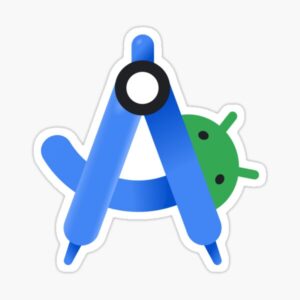
Android Studio: The Ultimate Tool for Android Development
In the ever-growing world of mobile apps, Android Studio stands as the go-to Integrated Development Environment (IDE) for creating Android applications. Developed by Google, it provides developers with all the tools they need to design, develop, test, and debug apps for Android devices. Whether you’re a beginner or an experienced developer, Android Studio is an essential tool for bringing your ideas to life.
In this blog, we’ll explore the key features of Android Studio, why it’s the preferred choice for Android development, and how you can get started.
What is Android Studio?
Android Studio is Google’s official IDE for Android development. Built on IntelliJ IDEA, it offers a robust, feature-packed environment for creating high-quality apps. From designing intuitive user interfaces to writing efficient code and debugging apps, Android Studio streamlines the entire development process.
Key Features of Android Studio
1. Intelligent Code Editor
•The code editor in Android Studio is designed to make coding faster and more accurate.
•It offers code completion, syntax highlighting, and real-time suggestions to help you write error-free code.
•Refactoring tools enable developers to improve the structure of their code without changing its behavior.
2. Powerful Emulator
•Test your apps on virtual devices using the built-in Android Emulator.
•Simulate various screen sizes, resolutions, and hardware configurations to ensure your app performs well across all devices.
•Debugging tools in the emulator make it easy to identify and fix issues quickly.
3. Flexible Build System
•Android Studio uses Gradle, a flexible and efficient build system.
•It allows you to manage dependencies, create multiple build variants, and optimize performance.
4. Layout Editor
•The drag-and-drop layout editor makes designing user interfaces a breeze.
•Switch between design view and XML view to fine-tune your app’s appearance and functionality.
5. Real-Time Preview
•Preview your UI changes instantly on various screen sizes and orientations.
•Test your app’s responsiveness without needing to run it on a physical or virtual device every time.
6. Integration with Firebase and Cloud Tools
•Easily integrate Firebase for analytics, crash reporting, and real-time databases.
•Use cloud tools to scale your app and add features like authentication and push notifications.
7. Version Control
•Built-in support for GitHub and other version control systems allows teams to collaborate efficiently.
•Keep track of code changes and roll back when needed.
Why Choose Android Studio?
Android Studio is tailored specifically for Android app development, which sets it apart from general-purpose IDEs. Here’s why it’s the preferred choice:
•Official Support: As Google’s official IDE, it’s always updated to support the latest Android features.
•Comprehensive Tools: All the tools you need for app development are in one place.
•Community and Documentation: A large community of developers and detailed documentation make problem-solving easier.
•Free and Open Source: Android Studio is completely free to download and use.
How to Get Started with Android Studio
If you’re new to Android Studio, follow these steps to begin your app development journey:
Step 1: Download and Install
•Visit the Android Studio download page.
•Download the installer for your operating system (Windows, macOS, or Linux) and follow the installation instructions.
Step 2: Set Up the Environment
•Run Android Studio and complete the setup wizard.
•Download the latest SDK tools and configure your development environment.
Step 3: Create a New Project
•Start a new project by selecting a template like “Empty Activity.”
•Configure the app name, package name, and minimum SDK level.
Step 4: Write and Test Your Code
•Use the intelligent code editor to write your app’s logic.
•Design the UI using the Layout Editor.
•Run the app on the built-in emulator or a connected Android device.
Step 5: Debug and Optimize
•Use debugging tools like Logcat to identify and resolve issues.
•Profile your app’s performance to optimize memory usage and speed.
Tips for Mastering Android Studio
1.Learn Keyboard Shortcuts
Save time by mastering shortcuts for common tasks like running the app or refactoring code.
2.Use Plugins
Explore plugins in the JetBrains Marketplace to extend Android Studio’s functionality.
3.Stay Updated
Regularly update Android Studio and the Android SDK to access new features and improvements.
4.Read the Documentation
The Android Developer Documentation is your best friend for learning about tools, APIs, and best practices.
Conclusion
Android Studio is the cornerstone of Android app development, providing a seamless environment for designing, coding, testing, and deploying apps. Its rich feature set, extensive documentation, and official support from Google make it a powerful tool for developers of all skill levels.
Whether you’re building your first app or managing a large-scale project, Android Studio has everything you need to succeed. Download it today and start creating amazing Android applications!